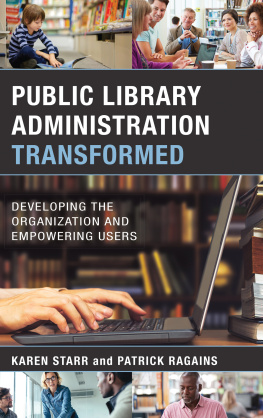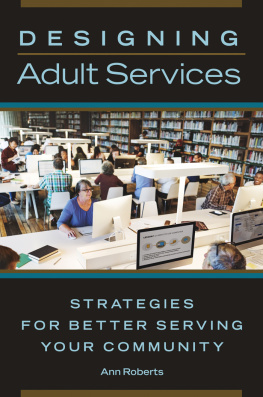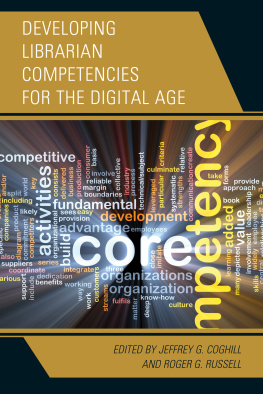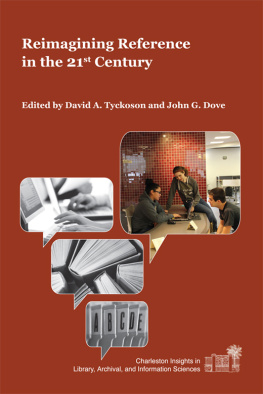CONTENTS
Samantha Schmehl Hines
Abigail Bibee, Erin Gallagher and David Isaak
Whitney A. Buccicone and Kristin Browning Leaman
Nina Servizzi
Kristy White
Aime deChambeau, Ian McCullough, Melanie McGurr and Mike Monaco
Beth Ashmore, Maria Collins, Christenna Hutchins and Lynn Whittenberger
Colleen W. Barrett, Whitney A. Buccicone and Joseph J. Shankweiler
Sarah Theimer
Misu Kim, Mingyu Chen and Debbie Montgomery
Jessica Urick Oberlin
Jo Williams
Angela Maranville and Karen Diaz
Lindsey Reno
Emerald Publishing Limited
Howard House, Wagon Lane, Bingley BD16 1WA, UK
First edition 2021
Copyright 2021 Emerald Publishing Limited
Reprints and permissions service
Contact:
No part of this book may be reproduced, stored in a retrieval system, transmitted in any form or by any means electronic, mechanical, photocopying, recording or otherwise without either the prior written permission of the publisher or a licence permitting restricted copying issued in the UK by The Copyright Licensing Agency and in the USA by The Copyright Clearance Center. Any opinions expressed in the chapters are those of the authors. Whilst Emerald makes every effort to ensure the quality and accuracy of its content, Emerald makes no representation implied or otherwise, as to the chapters' suitability and application and disclaims any warranties, express or implied, to their use.
British Library Cataloguing in Publication Data
A catalogue record for this book is available from the British Library
ISBN: 978-1-80043-829-3 (Print)
ISBN: 978-1-80043-828-6 (Online)
ISBN: 978-1-80043-830-9 (Epub)
ISSN: 0732-0671
LIST OF CONTRIBUTORS
| Beth Ashmore | North Carolina State University Libraries, USA |
| Colleen W. Barrett | University of Kentucky, USA |
| Abigail Bibee | University of Arizona Libraries, USA |
| Whitney A. Buccicone | University of Virginia, USA |
| Mingyu Chen | University of Texas at Dallas, USA |
| Maria Collins | North Carolina State University Libraries, USA |
| Aime deChambeau | The University of Akron, USA |
| Karen Diaz | West Virginia University Libraries, USA |
| Erin Gallagher | University of Florida Libraries, USA |
| Christenna Hutchins | North Carolina State University Libraries, USA |
| David Isaak | Reed College Library, USA |
| Misu Kim | University of Texas at Dallas, USA |
| Kristin Browning Leaman | Indiana University, USA |
| Angela Maranville | West Virginia University Libraries, USA |
| Ian McCullough | The University of Akron, USA |
| Melanie McGurr | The University of Akron, USA |
| Mike Monaco | The University of Akron, USA |
| Debbie Montgomery | University of Texas at Dallas, USA |
| Jessica Urick Oberlin | Pennsylvania College of Technology, USA |
| Lindsey Reno | University of New Orleans, USA |
| Nina Servizzi | New York University Division of Libraries, USA |
| Joseph J. Shankweiler | Western Kentucky University, USA |
| Sarah Theimer | University of New Hampshire, USA |
| Kristy White | Duquesne University, USA |
| Lynn Whittenberger | North Carolina State University Libraries, USA |
| Jo Williams | Middle Tennessee State University, USA |
INTRODUCTION
Samantha Schmehl Hines
While librarianship in general has had constant revolutionary change, technical services have nearly been completely reimagined in the twenty-first century. When looking to answer our broader question as a book series, How have libraries been managed and how should they be managed? the work of technical services and these groundbreaking changes provide many interesting opportunities and challenges for library administration. This volume collects 13 chapters from a variety of libraries that examine several aspects of technical services work in the twenty-first century. Our thoughtful authors offer applied theoretical solutions to practical problems encountered by library administrators and managers, in four broad categories.
PLANNING AND ASSESSMENT
Bibee, Gallagher, and Isaak investigate how technical services show up in ARL libraries' strategic plans and suggest guiding principles for tech services professionals, sourced in professional organizations. They chose to focus on strategic plans vs mission or vision statements due to the action orientation of these plans and their frequent update cycle. Their chapter highlights the valuable role of assessment, advocacy, collections and user experience in technical services, and the need for connection with the rest of the library's work.
Buccicone and Leaman ask us to consider technical services as outreach, by framing technical services work as work on behalf of users. They also examine the supportive nature of the technical services community and how this is another form of outreach. This framing can help advocates make the work of technical services more visible and appreciated. The chapter offers actionable ideas for library managers to develop this perspective.
Servizzi uses Complex Adaptive Systems (CASs) to uncover the various dependencies that show up in technical services that affect costs of services, performance assessment, and connections to larger library goals. Larger library-wide shifts toward user-centered services alongside with fiscal challenges are destabilizing the networks that make up the systems involved in technical services.
WORKFLOWS
White tackles workflow process mapping in technical services, linking it to Deming's high-performance style of organizational management and illustrating how it can build strong teams. Based on a case study, she shows several positive managerial outcomes around the use of workflow process mapping.
deChambeau, McCullough, McGurr, and Monaco examine the differences in workload for technical services librarians with faculty status in academic environments compared to their public services' peers. They highlight the difficulty with assessing technical services work, particularly around benchmarks and metrics, and point out the challenges in evaluating faculty librarian workloads generally compared with a more traditional faculty workload in the university. However, the workload guidelines produced by the authors helped situate technical services better within the library and the university.
Ashmore, Collins, Hutchins, and Whittenberger discussed a merger of acquisitions, cataloging and electronic resources that resulted in a life cycle approach toward print and electronic resources. This chapter outlines the implementation of the package management model for serials and for monographs, describes the tools and technologies used for support, and shares what the authors learned for managers and administrators of libraries. Special attention is paid to workflows.













